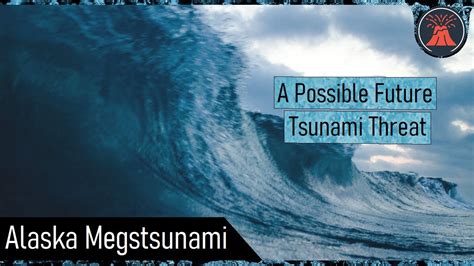
A Fernandina giant tortoise, long believed extinct and last seen over a century ago, has been rediscovered on Fernandina Island in the Galápagos archipelago, sending ripples of excitement through the scientific community. The finding confirms that Chelonoidis phantasticus, also known as the “fantastic giant tortoise,” is not extinct, offering renewed hope for the species’ survival.
Genetic analysis has confirmed the tortoise discovered in 2019 is indeed a Chelonoidis phantasticus, thought to have vanished more than 100 years ago. The discovery, made by a joint expedition between the Galápagos National Park and the Turtle Conservancy, has been hailed as a monumental achievement in conservation. “We initially suspected it might be from Española Island, another island in the Galápagos, because the saddleback morphology is not unique to Fernandina,” said Dr. James Gibbs, a tortoise expert at the State University of New York, in an interview with Yahoo News. “But the genetic analysis showed that it was indeed Chelonoidis phantasticus.”
The rediscovered female tortoise, estimated to be over 50 years old, was found in a patch of vegetation. The team is hopeful that there are other members of the species on the island, despite decades of searching turning up nothing. The single specimen has galvanized conservation efforts, sparking an intensive search of the island for additional members of its species.
The Rediscovery
The expedition that led to the rediscovery of the Chelonoidis phantasticus was part of a broader effort to survey the biodiversity of Fernandina Island. Fernandina, the youngest and westernmost island in the Galápagos archipelago, is characterized by its volcanic landscape and unique ecological niches. These environmental factors have shaped distinctive evolutionary pathways among the island’s fauna.
The team, led by Forrest Galante, a wildlife conservationist and biologist, meticulously scoured the island, navigating the difficult terrain. The discovery itself was a moment of immense excitement and relief. “Finding this tortoise confirms that Chelonoidis phantasticus is not extinct,” said Galante in a statement released shortly after the discovery. “It gives us hope, and it provides a crucial impetus to continue searching for other members of this species.”
Genetic Confirmation
Following the discovery, genetic samples were collected from the tortoise and sent to Dr. Gisella Caccone’s lab at Yale University for analysis. Dr. Caccone, a renowned expert in tortoise genetics, and her team compared the DNA of the rediscovered tortoise to that of a specimen collected in 1906. The genetic analysis provided definitive proof of the tortoise’s identity. “The genetic analysis unequivocally confirmed that the tortoise found on Fernandina Island is a Chelonoidis phantasticus,” Dr. Caccone explained. “It matched the genetic profile of the historical specimen, resolving any doubts about its species affiliation.”
The confirmation of Chelonoidis phantasticus‘s existence is not just a taxonomic victory, but also a victory for conservation science. It underscores the importance of genetic analysis in biodiversity research and highlights the potential for species to persist even when presumed extinct.
Characteristics of Chelonoidis phantasticus
Chelonoidis phantasticus, or the Fernandina giant tortoise, is notable for its uniquely shaped shell. Characterized by a saddleback morphology, particularly pronounced in males, this shell shape is an adaptation to the island’s environment. The tortoise’s shell features prominent projections along its upper margin, contributing to its “fantastic” appearance. The specimen discovered in 2019 exhibits some of these characteristics, though as a female, the saddleback shape is less pronounced.
The tortoises are thought to have evolved in isolation on Fernandina Island, leading to their distinctive traits. Their diet likely consists of vegetation native to the island, including grasses, leaves, and cacti. Giant tortoises play a critical role in their ecosystems as seed dispersers and herbivores.
Conservation Implications
The rediscovery of Chelonoidis phantasticus has profound implications for conservation efforts in the Galápagos Islands. The finding underscores the resilience of life and the potential for species to persist in the face of habitat loss and other threats. It also highlights the need for continued monitoring and conservation efforts in the Galápagos, a region renowned for its biodiversity.
Conservationists are now focused on determining the size and composition of the remaining population of Chelonoidis phantasticus on Fernandina Island. This will involve intensive surveys of the island, using advanced tracking technologies and traditional field methods. The aim is to locate additional individuals and assess the genetic diversity of the population.
“Our top priority is to find more tortoises on Fernandina Island,” stated Danny Rueda Córdova, the director of the Galápagos National Park. “We are committed to dedicating the resources necessary to conduct a comprehensive search and protect this species from extinction.”
Threats to Survival
Fernandina Island, while relatively untouched by human development, faces several environmental challenges. Volcanic activity, a natural part of the island’s ecosystem, can disrupt habitats and impact tortoise populations. Introduced species, such as rodents, also pose a threat by preying on tortoise eggs and young tortoises.
Conservationists are implementing strategies to mitigate these threats. These include controlling invasive species, monitoring volcanic activity, and developing a captive breeding program. The goal is to ensure the long-term survival of Chelonoidis phantasticus and maintain the ecological integrity of Fernandina Island.
Captive Breeding Program
A captive breeding program may be essential for the long-term survival of Chelonoidis phantasticus. If additional tortoises are found, they could be brought into a controlled environment where they can breed and produce offspring. These offspring could then be reintroduced to Fernandina Island, bolstering the wild population.
The Galápagos National Park has extensive experience in captive breeding of giant tortoises. They have successfully bred other species of Galápagos tortoises, including those from Española Island. This expertise will be invaluable in any efforts to breed Chelonoidis phantasticus.
The Importance of the Galápagos Islands
The Galápagos Islands are a UNESCO World Heritage Site and a biodiversity hotspot. The islands are home to a remarkable array of endemic species, many of which are found nowhere else on Earth. The Galápagos giant tortoises are among the most iconic of these species.
The islands played a pivotal role in the development of Charles Darwin’s theory of evolution. Darwin’s observations of the unique flora and fauna of the Galápagos, including the giant tortoises, provided critical insights into the processes of natural selection and adaptation.
The rediscovery of Chelonoidis phantasticus underscores the importance of protecting the Galápagos Islands and their unique biodiversity. It also highlights the potential for species to recover, even after long periods of decline.
Community Involvement
Conservation efforts in the Galápagos Islands rely heavily on the support and involvement of local communities. The Galápagos National Park works closely with residents to promote sustainable tourism, education, and conservation awareness.
Local guides, researchers, and community members play a vital role in monitoring tortoise populations, controlling invasive species, and educating visitors about the importance of conservation. Their knowledge and participation are essential for the long-term success of conservation efforts.
Future Research
The rediscovery of Chelonoidis phantasticus has opened up new avenues for research. Scientists are now studying the tortoise’s genetics, ecology, and behavior to gain a better understanding of the species and its role in the Fernandina Island ecosystem.
Future research will focus on identifying the tortoise’s diet, habitat preferences, and reproductive strategies. This information will be critical for developing effective conservation strategies and ensuring the long-term survival of the species.
Global Significance
The rediscovery of Chelonoidis phantasticus has captured the attention of the global scientific community and the general public. It is a reminder of the importance of biodiversity conservation and the potential for unexpected discoveries.
The story of the Fernandina giant tortoise is a symbol of hope and resilience. It shows that even species on the brink of extinction can be brought back from the brink with dedicated conservation efforts and a commitment to protecting the natural world.
The rediscovery serves as a reminder that there’s always more to learn and that the planet holds many secrets yet to be uncovered. It reignites the passion for exploration and discovery, urging scientists and conservationists to continue their work to protect the world’s biodiversity.
The impact of this finding extends beyond the Galápagos Islands. It reinforces the global importance of biodiversity conservation. By saving species from extinction, we safeguard the intricate web of life that supports all ecosystems and ensures the planet’s health and resilience.
Challenges Ahead
Despite the excitement surrounding the rediscovery of Chelonoidis phantasticus, significant challenges remain. Finding additional members of the species on Fernandina Island will be a difficult task, given the island’s rugged terrain and dense vegetation.
Protecting the tortoises from threats such as invasive species and habitat degradation will also require sustained effort and resources. The Galápagos National Park and its partners are committed to addressing these challenges and ensuring the long-term survival of Chelonoidis phantasticus.
Public Awareness
Raising public awareness about the importance of biodiversity conservation is crucial for the success of conservation efforts. The story of the Fernandina giant tortoise provides a powerful opportunity to educate people about the threats facing endangered species and the actions they can take to protect them.
By supporting conservation organizations, reducing our environmental footprint, and advocating for responsible environmental policies, we can all contribute to the preservation of biodiversity and the protection of our planet.
The rediscovery of the Chelonoidis phantasticus underscores the significance of ongoing research, conservation efforts, and global collaboration. It serves as a beacon of hope, demonstrating that even species considered lost can be brought back from the brink of extinction with dedication, resources, and a profound respect for the natural world. The future of the Fernandina giant tortoise depends on our collective efforts to protect its habitat, mitigate threats, and ensure that this remarkable species continues to roam the Galápagos Islands for generations to come. The success story can inspire similar endeavors across the globe, proving that conservation, though challenging, can lead to extraordinary discoveries and outcomes.
The Search for a Mate
Currently, the female tortoise resides at a breeding center on Santa Cruz Island, where she is being cared for by experts from the Galápagos National Park. A critical task is to determine if any males of the Chelonoidis phantasticus species still exist on Fernandina Island. The park is organizing more expeditions to the island, equipped with advanced technology and expert personnel, to increase the chances of finding a mate for her.
Scientists also contemplate the possibility of using advanced genetic techniques to ensure the survival of the species. If no other living members are found, exploring options like artificial insemination with cryopreserved sperm from the 1906 specimen may become necessary, although this poses significant ethical and technical challenges.
A Symbol of Hope
The unexpected return of Chelonoidis phantasticus has reignited hope for other species thought to be extinct. It highlights the importance of continued conservation work, even when the odds seem insurmountable. The story serves as a reminder that diligent scientific research and conservation efforts can yield astonishing results. It calls for increased investment in biodiversity surveys and habitat preservation to uncover more species that may be hidden from view.
The Importance of Continued Conservation
The rediscovery of the Fernandina giant tortoise is not just a scientific achievement; it’s a call to action. It underlines the need for sustained conservation efforts to protect the world’s biodiversity. The Galápagos Islands, with their unique and fragile ecosystems, require continued vigilance and protection.
FAQ: Fernandina Giant Tortoise Rediscovery
1. What is the Chelonoidis phantasticus?
The Chelonoidis phantasticus, also known as the Fernandina giant tortoise or “fantastic giant tortoise,” is a species of giant tortoise native to Fernandina Island in the Galápagos archipelago. It was previously known from a single specimen collected in 1906 and was believed to be extinct for over a century. This species is characterized by a unique saddleback shell morphology, more pronounced in males, and adaptations to the island’s volcanic environment.
2. How was the Chelonoidis phantasticus rediscovered?
The Chelonoidis phantasticus was rediscovered during a joint expedition by the Galápagos National Park and the Turtle Conservancy in 2019. The team, led by wildlife conservationist Forrest Galante, meticulously searched Fernandina Island and found a single female tortoise. Genetic analysis conducted at Yale University confirmed that the tortoise was indeed a Chelonoidis phantasticus, matching the DNA of the historical 1906 specimen.
3. What are the conservation implications of this rediscovery?
The rediscovery has significant conservation implications, demonstrating that species presumed extinct can still be found with dedicated search efforts. It underscores the importance of continued biodiversity surveys and conservation programs in the Galápagos Islands. Current efforts focus on searching for additional tortoises on Fernandina Island, controlling invasive species, and potentially establishing a captive breeding program to bolster the population. This has also inspired new hope for the possible rediscovery of other species that have been declared extinct.
4. What are the threats to the survival of the Chelonoidis phantasticus?
The Chelonoidis phantasticus faces several threats, including volcanic activity on Fernandina Island, which can disrupt habitats. Invasive species, such as rodents, pose a threat by preying on tortoise eggs and young tortoises. Additionally, habitat degradation and climate change could also impact the species’ survival. The impact of potential human activities, like tourism, also needs to be carefully monitored and managed.
5. What are the next steps in the conservation of this species?
The immediate next steps include intensive searches on Fernandina Island to locate additional Chelonoidis phantasticus tortoises. If more individuals are found, a captive breeding program may be initiated to increase the population size. Genetic studies will continue to assess the genetic diversity of the species. Conservation efforts will also focus on controlling invasive species and protecting the tortoises’ habitat from further degradation. The female currently resides at a breeding center in Santa Cruz Island to ensure her health, safety, and potential for breeding.









